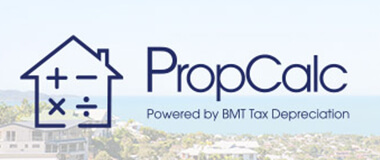More and more Australians may be choosing to live in their investment property before it is rented out and this trend places thousands of people at risk of missing out on lucrative tax deductions, according to BMT Tax Depreciation.
BMT Tax Depreciation has worked with more than half a million Australian property investors to help them uncover tax deductions for the wear, tear and ageing of their investment properties.
New data from the company relating to the 2018/19 financial year to date shows over one in four people had lived in their property prior to renting it out, representing a jump of nearly 2.3 per cent over the previous financial year.
The Chief Executive Officer of BMT, Bradley Beer said that, following changes to tax depreciation laws, many of these people may be at risk of losing thousands of dollars in tax deductions at a time when the property market is already experiencing deteriorating conditions.
“Owners of income-producing investment properties can claim lucrative tax deductions for ‘plant and equipment’ items in a property, such as a carpet or air conditioning units. However, under the new laws, if an investor is living in a property at the time the assets are installed, the items will be considered previously used and cannot be claimed,” said Bradley Beer.
“Our data suggests a growing number of people are opting to live in a property while renovating and before renting it out. If they choose to make these types of additions to their property during this time, they could lose out on thousands of dollars of tax deductions.”
Mr Beer said there are also capital works deductions available to owners who rent their property out for depreciation of the structural element of a building such as new walls, kitchen cupboards, toilets and roof tiles. Unlike plant and equipment these deductions are unaffected by the legislation changes.
Unless they have a good reason, Mr Beer said investors who are planning on installing new plant and equipment assets should make these additions after they move out of the property and it has been listed for rent. This simple approach could increase their depreciation deductions and improve the cash flow generated by the investment property each year.
During the 2017/2018 financial year, 30.9 per cent of requests for BMT Depreciation Schedules were for brand new properties. This is up from 26.4 per cent of all depreciation schedule requests received during the 2015/2016 financial year.
“The new legislation does not affect buyers of new properties so these properties typically hold the most lucrative value for investors from a tax perspective,” said Bradley Beer.
“This fact, and the new stock that has come on the market in recent years, may be contributing to the increased demand for new investment properties over second hand properties.”
Despite the rule changes, BMT are reminding investors that there are still lucrative tax deductions on offer for most investment properties.
“We found an average of $8,212 in deductions in the 2017/2018 financial year for all residential investment properties,” said Bradley Beer.
“Tax depreciation can dramatically increase the cash flow from an investment property so savvy investors should look attain a basic understanding of the rules and assemble a strong team of advisors to help take advantage of them,” concluded Bradley Beer.
Lauren Howarth
0448 507 979 | lauren.howarth@bmtqs.com.au

BMT Tax Depreciation





